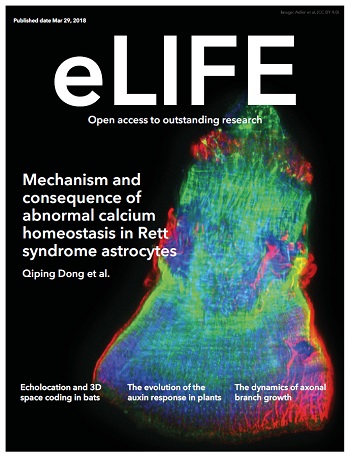基于祁连山国家公园时间、空间和食性生态位划分分析的顶级食肉动物与中型食肉动物的不同共存模式
IF 6.4
1区 生物学
Q1 BIOLOGY
引用次数: 0
摘要
食肉动物在维持生态系统结构和功能以及生态过程中发挥着关键作用。了解同域物种如何在自然生态系统中共存是群落生态学和生物多样性保护的核心研究课题。在这项研究中,我们探索了顶级食肉动物(狼、雪豹、欧亚猞猁、猞猁、猞猁......)之间的种内和种间生态位分配,以及空间、时间和食物生态位分配、在中国祁连山国家公园,我们利用相机诱捕数据和DNA元条码测序数据,研究了顶层食肉动物(狼、雪豹、猞猁)和中层食肉动物(花猫、赤狐、藏狐)之间的空间、时间和食物生态位分配。我们的研究表明,顶级食肉动物物种在时间上(种间重叠系数从0.661到0.900不等)或营养上(Pianka指数从0.458到0.892不等)有更多的重叠,中级食肉动物物种在时间上(种间重叠系数从0.661到0.900不等)或营养上(Pianka指数从0.458到0.892不等)有更多的重叠。892),中型食肉动物物种之间的食物重叠率很高(皮安卡指数从 0.945 到 0.997),顶级食肉动物和中型食肉动物物种之间的时间重叠率很高(种间重叠系数从 0.497 到 0.855)。狼与雪豹(Pianka指数=0.892)以及帕拉斯猫与藏狐(Pianka指数=0.997)之间存在大量食物重叠,表明这些物种对的资源竞争有可能加剧。我们的结论是,空间生态位分区可能是促进顶级食肉动物物种共存的关键驱动因素,而空间和时间生态位分区可能促进中型食肉动物物种的共存,空间和食物生态位分区促进顶级食肉动物和中型食肉动物物种的共存。我们的研究结果在考察中国祁连山国家公园食肉动物物种多样化共存模式的同时,考虑了时间、空间和食物维度的分区。这些研究结果将极大地促进目前对食肉动物群落的理解,并有助于在脆弱的高山生态系统中进行有效的保护管理。本文章由计算机程序翻译,如有差异,请以英文原文为准。
Different coexistence patterns between apex carnivores and mesocarnivores based on temporal, spatial, and dietary niche partitioning analysis in Qilian Mountain National Park, China
Carnivores play key roles in maintaining ecosystem structure and function as well as ecological processes. Understanding how sympatric species coexist in natural ecosystems is a central research topic in community ecology and biodiversity conservation. In this study, we explored intra- and interspecific niche partitioning along spatial, temporal, and dietary niche partitioning between apex carnivores (wolf Canis lupus, snow leopard Panthera uncia, Eurasian lynx Lynx lynx) and mesocarnivores (Pallas’s cat Otocolobus manul, red fox Vulpes vulpes, Tibetan fox Vulpes ferrilata) in Qilian Mountain National Park, China, using camera trapping data and DNA metabarcoding sequencing data. Our study showed that apex carnivore species had more overlap temporally (coefficients of interspecific overlap ranging from 0.661 to 0.900) or trophically (Pianka’s index ranging from 0.458 to 0.892), mesocarnivore species had high dietary overlap with each other (Pianka’s index ranging from 0.945 to 0.997), and apex carnivore and mesocarnivore species had high temporal overlap (coefficients of interspecific overlap ranging from 0.497 to 0.855). Large dietary overlap was observed between wolf and snow leopard (Pianka’s index = 0.892) and Pallas’s cat and Tibetan fox (Pianka’s index = 0.997), suggesting the potential for increased resource competition for these species pairs. We concluded that spatial niche partitioning is likely to key driver in facilitating the coexistence of apex carnivore species, while spatial and temporal niche partitioning likely facilitate the coexistence of mesocarnivore species, and spatial and dietary niche partitioning facilitate the coexistence between apex and mesocarnivore species. Our findings consider partitioning across temporal, spatial, and dietary dimensions while examining diverse coexistence patterns of carnivore species in Qilian Mountain National Park, China. These findings will contribute substantially to current understanding of carnivore guilds and effective conservation management in fragile alpine ecosystems.
求助全文
通过发布文献求助,成功后即可免费获取论文全文。
去求助
来源期刊

eLife
BIOLOGY-
CiteScore
12.90
自引率
3.90%
发文量
3122
审稿时长
17 weeks
期刊介绍:
eLife is a distinguished, not-for-profit, peer-reviewed open access scientific journal that specializes in the fields of biomedical and life sciences. eLife is known for its selective publication process, which includes a variety of article types such as:
Research Articles: Detailed reports of original research findings.
Short Reports: Concise presentations of significant findings that do not warrant a full-length research article.
Tools and Resources: Descriptions of new tools, technologies, or resources that facilitate scientific research.
Research Advances: Brief reports on significant scientific advancements that have immediate implications for the field.
Scientific Correspondence: Short communications that comment on or provide additional information related to published articles.
Review Articles: Comprehensive overviews of a specific topic or field within the life sciences.
 求助内容:
求助内容: 应助结果提醒方式:
应助结果提醒方式:


